- News
- Reviews
- Bikes
- Accessories
- Accessories - misc
- Computer mounts
- Bags
- Bar ends
- Bike bags & cases
- Bottle cages
- Bottles
- Cameras
- Car racks
- Child seats
- Computers
- Glasses
- GPS units
- Helmets
- Lights - front
- Lights - rear
- Lights - sets
- Locks
- Mirrors
- Mudguards
- Racks
- Pumps & CO2 inflators
- Puncture kits
- Reflectives
- Smart watches
- Stands and racks
- Trailers
- Clothing
- Components
- Bar tape & grips
- Bottom brackets
- Brake & gear cables
- Brake & STI levers
- Brake pads & spares
- Brakes
- Cassettes & freewheels
- Chains
- Chainsets & chainrings
- Derailleurs - front
- Derailleurs - rear
- Forks
- Gear levers & shifters
- Groupsets
- Handlebars & extensions
- Headsets
- Hubs
- Inner tubes
- Pedals
- Quick releases & skewers
- Saddles
- Seatposts
- Stems
- Wheels
- Tyres
- Health, fitness and nutrition
- Tools and workshop
- Miscellaneous
- Buyers Guides
- Features
- Forum
- Recommends
- Podcast
review
£849.99
VERDICT:
An impressive take on the beginner's bike, and shows that weight has little to do with all-out performance
Weight:
9,380g
Contact:
Mango Bikes
At road.cc every product is thoroughly tested for as long as it takes to get a proper insight into how well it works. Our reviewers are experienced cyclists that we trust to be objective. While we strive to ensure that opinions expressed are backed up by facts, reviews are by their nature an informed opinion, not a definitive verdict. We don't intentionally try to break anything (except locks) but we do try to look for weak points in any design. The overall score is not just an average of the other scores: it reflects both a product's function and value – with value determined by how a product compares with items of similar spec, quality, and price.
What the road.cc scores meanGood scores are more common than bad, because fortunately good products are more common than bad.
- Exceptional
- Excellent
- Very Good
- Good
- Quite good
- Average
- Not so good
- Poor
- Bad
- Appalling
The Mango Bikes Point R is aimed at those new to cycling but it's far from being a beginner's bike. With great comfort levels, exciting handling and good looks, the Point R has just as much to offer the seasoned roadie as those new to life on two wheels. The top level model now comes with a full Shimano 105 drivetrain, plus upgraded brakes and tyres.
The Ride
Looking at the stats, the Point R might not seem the obvious choice against some of the opposition out there. For example, this model weighs in at 9.38kg (20.76lb), which at face value is a bit on the heavy side, plus there is that old adage about alloy frames being harsh to ride.
We can dismiss the latter point immediately – the Mango is one of the most comfortable alloy bikes I've ridden. But also, the weight never really seems to matter. Okay, it's a touch laboured if you're in town and constantly stop-starting at traffic lights, but out on the open road you really don't notice it.
The Point R is a spirited climber too, a bike that seems to respond better to being ridden out of the saddle for the majority of ascents, and stiffness through the bottom bracket is rather impressive, which makes climbing fun (well, relatively).
Mango has gone down the Mike Burrows (think Giant TCR) route of using just three compact frame sizes to fit the majority of people, which means they are a little longer in the top tube than most. The fact that it's designed to take full mudguards also increases wheelbase length.
A longer wheelbase will typically slow the steering a bit and make a bike feel more stable, which is ideal for beginners or for riding on the tricky road surfaces that a lot of mudguard equipped bikes are likely to be doing. The trade-off is that the bike can be less fun, or 'direct' feeling, to ride than a shorter frame race bike, especially in the bends. Mango has managed to find a really good balance between the two: for the majority of the time it cruises along with very little input needed, but when you start descending or whipping between traffic the steering is sharp enough.
One way Mango has achieved this is by speccing a much shorter stem than typical, with each frame size fitted with an 80mm unit; personally I'd prefer something a little bit longer for rides of a fair few hours as the position can feel a little cramped, and when climbing standing up out of the saddle I found I could easily catch my knees on the handlebar. Increasing the stem length by 10mm at least on the medium and large would probably bring a little more balance to the steering without sacrificing steering speed – especially for riders at the top end of the size range.
It's also worth noting that, when you lean the bike over at speed – to whip around a roundabout for instance – the steering can become twitchy as it turns in too early, so you have to keep correcting it. It's not a major issue, though.
Everywhere else, the Point R holds its headset up high as it really is such an easy bike to ride and great for tapping out the miles. Thanks to how comfortable it is you can really cover a lot of ground without feeling fatigued from vibration over rough road surfaces.
I'd happily jump aboard the Point R for a day out rather than something lighter and stiffer in the fleet, purely because it is so easy to live with. For everything bar racing, the Mango is hard to knock.
Frame and fork
The frame itself is pretty impressive for the money, with smooth welds and internal cable routing belying its entry-level price tag. It looks much more expensive than it actually is.
The curved tubes, no doubt a result of hydroforming, give the bike a smooth almost monocoque construction look topped off with very tidy welding. The arced top tube is a particular highlight that I think looks really cool, especially on the smaller sizes as they look less 'forced' to create the geometry with 700C wheels.
Up front it's great to see a tapered head tube for increased stiffness. It's pretty much a given on the majority of bikes but at entry-level can be one of those things that get sacrificed on cost grounds. On the Point R it sharpens the steering, especially when speeds are high, and under heavy braking loads you really notice the difference.
As for the internal cabling, you'll notice the entry and exit holes use inserts that are screwed into the frame, something we've seen lately on much more high end frames. Removing these gives you access to the inside of the frame and makes changing a brake or gear cable easy – it works, believe me, I've done the job on a fellow Mango. The inside of the frame isn't guided for the cables or anything, but the extra width of the slot allows you to push a screwdriver in to deflect the cable up and out.
Other than that, the Mango looks a pretty standard frame. The bottom bracket shell is threaded for standard cups, perfect in my eyes for what could become a winter training frame as there are likely to be fewer creaking issues compared with BB30 bearing cups, for instance, which have tighter tolerances.
The chainstays haven't been oversized nor have the seatstays been slimmed down excessively, which also highlights just how successful Mango has been at creating so much comfort; a pencil-thin, flexible seatstay is normally the first line of defence.
The finish of the frame is hardwearing, so the bike stays looking good even after a few knocks. It comes in four colours with this Electric Blue being a new addition. I think it's rather stunning, being dark but bright, if that makes any sense. Neon Yellow, which basically glows in the dark, plus a more conservative Arctic White and Stealth Black are your other options.
As I've already mentioned, the Mango Point R will take full mudguards as well as a rack thanks to plenty of mounting points, giving loads of flexibility whether you are after a winter trainer, commuter or racer – maybe all three!
Groupset
The model here has had an upgrade to a full Shimano 105 drivetrain from the version Dave Arthur tested last year, with the FSA chainset swapped for a 5800 series one, and it's the latest 11-speed version whereas Dave's test bike had 10-speed. It's a positive upgrade as the bike does look more 'complete', plus the shifting is slightly crisper.
The brakes have also seen an uplift from the original Tektros to Shimano's R451 deep-drop dual-pivot callipers. In my mind this could have gone a touch further, because although the Shimanos are an improvement on the Tektros, they aren't a whole lot better.
I've possibly said this before in reviews, but I'll touch on it again... I think if you are aiming a bike at those new to riding you should never ever scrimp on braking power. Confidence is key, and if you don't trust your brakes you'll never progress as a rider looking to challenge the limits of your ability or that of the bike.
The pad quality of the R451s is pretty poor, and the flex in the overall calliper doesn't help matters. I'd upgrade to the R650s as a minimum for a set of brakes you can really have confidence in.
Wheels, tyres and finishing kit
When it comes to wheels, our test bike has the optional upgrade to the Vision 30s, for an extra £79.99. An absolute bargain for a solid set of wheels (I tested the 35s, read the review here).
They might not be the lightest wheels on the market but they have a really solid feel that suits the ride of the Mango. The only issue I really have with them is that the anodising of the rims makes the already poor braking even worse, until a couple of wet rides do the business in taking the finish off.
The tyres have also seen a bit of an upgrade, from Kendas to Continental Ultra Sport IIs. On the whole it's a good move, the Contis punching well above their weight in terms of value for money. They roll well and have decent levels of grip, although they can be a little sketchy in the wet. Their puncture resistance has always been impressive on previous test bikes, and it's been no different here on the Mango.
The saddle is a well known shape and provides plenty of comfort and support. I'm not a huge fan of overly padded saddles but this one works well, adding to the overall comfort of the bike.
The rest of the kit is branded Chasewood, an in-house logo of Mango, and it does the job. The alloy components are simple in construction but work well, and the compact bar means it's as easy to use in the drops as it is on the tops.
Value
When it comes to value, although this is a great bike for the money, I'm not convinced it's the best buy in the range. The addition of a full 105 groupset looks good on the face of it, until you consider that it's £100 more than the 105 model with the FSA chainset and Tektro brakes; the difference in speccing a 5800 chainset and R451 brakes is about £40, so an extra £100 is a bit steep.
It's also worth pointing out that B'Twin's Ultra 700 AF has a very similar spec to this full 105 Mango, but at the price of the Tektro brakes/FSA chainset model...
> Check out our buyer's guide to the best road bikes for less than £1,000
Don't think I'm putting a downer on the Point R, though, I'm really not. I think it's a great bike. I was extremely impressed with it, especially as the miles grew – whether out for a quick hour's blast or a couple more, it's very impressive to ride.
It might be a touch heavy to race on, but other than that it's hard to knock, and while those new to the sport might stick to the established brands, the Point R is definitely worth more than a cursory glance.
Verdict
An impressive take on the beginner's bike, and shows that weight has little to do with all-out performance
road.cc test report
Make and model: Mango Point R
Size tested: Medium
About the bike
State the frame and fork material and method of construction. List the components used to build up the bike.
FRAME 6061 aerospace grade alloy
FORK Carbon bladed with mudguard mounts
WHEELSET 700c CW-RD2.0 20/28H 10/11spd quick release (FSA Team Vision upgrade option)
TYRES Continental Ultrasport II 25c
INNERTUBES Vavert 60mm long valve
HANDLEBARS CW Team-S Compact 420mm
STEM CW Team-S 80mm / 31.8mm clamp / 7 degree
HEADSET Integrated, FSA top cap
SEATPOST CW Team-S forged alloy 27.2mm
SEATCLAMP CW bolt-up 31.8mm
SADDLE MB upgrade black, CroMo rails
TAPE MB textured black
SHIFTERS Shimano 105 5800 STI brake/shift levers
BRAKES Shimano R451 long drop dual pivot caliper
FRONT MECH Shimano 105 5800 front
REAR MECH Shimano 105 5800 rear
CRANKSET Shimano 105 Black, 172.5mm, Compact 50/34T
BOTTOM BRACKET Shimano 105 BB-R60 external
CASSETTE Shimano CS5800 11-32T
CHAIN Shimano CN5800 116L 11spd
CABLE ROUTING Internal
BOTTLE CAGE MOUNTS Double
PANNIER MOUNTS Yes
MUDGUARD MOUNTS Yes
DROPOUTS Replaceable rear derailleur hanger
Tell us what the bike is for, and who it's aimed at. What do the manufacturers say about it? How does that compare to your own feelings about the bike?
Mango says, "Point R is a confidence-inspiring road bike, capable on climbs and stable at high speed on descents. Developed over the course of a year from the ground up by our experienced design team, we've incorporated features normally found on bikes at much higher price points. Point R is spec'd with kit from the best component manufacturers across the world and like all our bikes, hand assembled at our UK HQ."
I like the Mango Point R a lot, but I'm not sure if this is the most cost effective option.
Frame and fork
Overall rating for frame and fork
8/10
Tell us about the build quality and finish of the frame and fork?
I love the paint colour and it seems to be well built and finished, if a touch on the heavy side.
Tell us about the materials used in the frame and fork?
The frame is 6061 aluminium with the fork being a mix of alloy steerer and carbon fibre legs.
Tell us about the geometry of the frame and fork?
The Point R is typically 'winter bike' with its long wheelbase and slightly slacker head and seat angles, but thanks to the short stem and well thought out geometry it feels quick handling and fun to ride.
Full details here - https://www.mangobikes.com/shop/bikes/point-r/point-r-full-105/
How was the bike in terms of height and reach? How did it compare to other bikes of the same stated size?
With a stack to reach ratio of 1:48 (medium) the Mango has a setup between race and endurance.
Riding the bike
Was the bike comfortable to ride? Tell us how you felt about the ride quality.
Yeah, surprisingly so. The Point R feels more like steel than alloy.
Did the bike feel stiff in the right places? Did any part of the bike feel too stiff or too flexible?
Yes, no complaints here whatsoever. It may not be as sharp as some race bikes on the market but I never felt as though it was lacking in stiffness.
How did the bike transfer power? Did it feel efficient?
Pretty good, the overall weight blunted things a little.
Was there any toe-clip overlap with the front wheel? If so, was it a problem?
No.
How would you describe the steering? Was it lively, neutral or unresponsive? Neutral on the whole but if you really push it the short stem can create some twitchiness.
Tell us some more about the handling. How did the bike feel overall? Did it do particular things well or badly?
The Point R is aimed at those new to road riding, but don't be fooled – this thing is fun to ride quickly. Fast enough to incite a thrill without being overly twitchy or edgy.
Which components had the most effect (good or bad) on the bike's comfort? would you recommend any changes?
The Mango branded saddle is very comfortable.
Which components had the most effect (good or bad) on the bike's stiffness? would you recommend any changes?
Nope, keep everything as it is.
Which components had the most effect (good or bad) on the bike's efficiency? would you recommend any changes?
The Point R is a good all-round bike, although you could upgrade the wheels to drop the weight a little.
Rate the bike for efficiency of power transfer:
8/10
Rate the bike for acceleration:
7/10
Rate the bike for sprinting:
8/10
Rate the bike for high speed stability:
8/10
Rate the bike for cruising speed stability:
8/10
Rate the bike for low speed stability:
8/10
Rate the bike for flat cornering:
8/10
Rate the bike for cornering on descents:
8/10
Rate the bike for climbing:
8/10
The drivetrain
Rate the drivetrain for performance:
9/10
Rate the drivetrain for durability:
8/10
Rate the drivetrain for weight:
8/10
Rate the drivetrain for value:
9/10
Tell us some more about the drivetrain. Anything you particularly did or didn't like? Any components which didn't work well together?
I love Shimano 105, you can't knock it for its performance/price/looks; its shifting is a real highlight.
Wheels and tyres
Rate the wheels for performance:
8/10
Rate the wheels for durability:
8/10
Rate the wheels for weight:
6/10
Rate the wheels for comfort:
8/10
Rate the wheels for value:
8/10
Tell us some more about the wheels.Did they work well in the conditions you encountered? Would you change the wheels? If so, what for?
I've recently tested the Vision 35s and these 30s are solid performers that, at £79.99, are a sensible upgrade. They might not be the lightest but I'd happily spec them on any bike where I wanted reliability over all-out speed. Saying that, they roll much better than their weight would suggest.
Rate the tyres for performance:
8/10
Rate the tyres for durability:
8/10
Rate the tyres for weight:
7/10
Rate the tyres for comfort:
8/10
Rate the tyres for value:
9/10
Tell us some more about the tyres. Did they work well in the conditions you encountered? Would you change the tyres? If so, what for?
For the money you can't knock Continental's Ultra Sport IIs. They are basically Conti's top end tyres from a few years ago and what you get is solid grip, good rolling resistance and plenty of durability.
Controls
Rate the controls for performance:
8/10
Rate the controls for durability:
8/10
Rate the controls for weight:
8/10
Rate the controls for comfort:
8/10
Rate the controls for value:
8/10
Tell us some more about the controls. Any particularly good or bad components? How would the controls work for larger or smaller riders?
A short stem and compact handlebar keeps the steering engaging and provides a range of positions for any rider.
Anything else you want to say about the componentry? Comment on any other components (good or bad)
Upgrading the brakes to Shimano R451 is a step in the right direction as they do offer an advantage over the Tektros found on the Point R we tested last year, but they still lack stopping power. I'd be looking to upgrade to at least Shimano R650 to be truly confident in their ability.
Your summary
Did you enjoy riding the bike? Yes
Would you consider buying the bike? Yes
Would you recommend the bike to a friend? Yes
Rate the bike overall for performance:
8/10
Rate the bike overall for value:
6/10
Use this box to explain your score
I really enjoyed riding the Mango Point R. It's a real challenger to the big brands in terms of ride quality, spec and looks, though I do feel this full 105 model isn't quite as good an offer as the example Dave Arthur tested last year. On the whole, though, the Point R is a great bike whether you are looking for something to kick off your roadie ambitions or you're looking for a winter steed. Ignore the stats and buy with your heart.
About the tester
Age: 38
I usually ride: This month's test bike My best bike is: Kinesis Aithien
I've been riding for: 10-20 years I ride: Every day I would class myself as: Expert
I regularly do the following types of riding: time trialling, commuting, club rides, sportives, fixed/singlespeed
As part of the tech team here at F-At Digital, senior product reviewer Stu spends the majority of his time writing in-depth reviews for road.cc, off-road.cc and ebiketips using the knowledge gained from testing over 1,500 pieces of kit (plus 100's of bikes) since starting out as a freelancer back in 2009. After first throwing his leg over a race bike back in 2000, Stu's ridden more than 170,000 miles on road, time-trial, track, and gravel bikes, and while he's put his racing days behind him, he still likes to smash the pedals rather than take things easy. With a background in design and engineering, he has an obsession with how things are developed and manufactured, has a borderline fetish for handbuilt metal frames and finds a rim braked road bike very aesthetically pleasing!
Latest Comments
- hawkinspeter 1 min 47 sec ago
Whilst EV cars are an improvement over ICE cars, I think they're a distraction from the possibilities of e-bikes, e-scooters and e-cargo-bikes etc....
- David9694 2 hours 8 min ago
I like how drivers make the case for making monitoring covert, not overt.
- andystow 2 hours 20 min ago
She seemed a bit upset about a minor misjudgement that could have killed someone and is going to cause months of stress and inconvenience.
- Backladder 2 hours 26 min ago
No we don't agree, personally I would take primary, even if only for a short period although I can understand why some riders might not want to...
- brooksby 2 hours 48 min ago
And which looks very like the bag produced by indy bag manufacturer Wizard Works…...
- HoarseMann 2 hours 59 min ago
If it was a 'no vehicles' sign (all white circle centre), it would mean cyclists could ride in the hours that HGVs and disabled drivers are allowed...
- stonojnr 4 hours 29 min ago
The bit at the start and end looks like a cycle lane, but the bit they drive on looks just like a patched filter lane for traffic lights.
- JOHN5880 4 hours 29 min ago
Hey, you 4 execs helped run a company into the ground and have no jobs anymore... Come work for us because you have great experience in the...
- Oakhambike 5 hours 14 min ago
£11.5k for a bike weighing over 8kg that's 2 fingers to customers let alone UCI
- Dnnnnnn 5 hours 29 min ago
I'm going to show my bike a picture of this shed and tell it, "If you don't behave..."































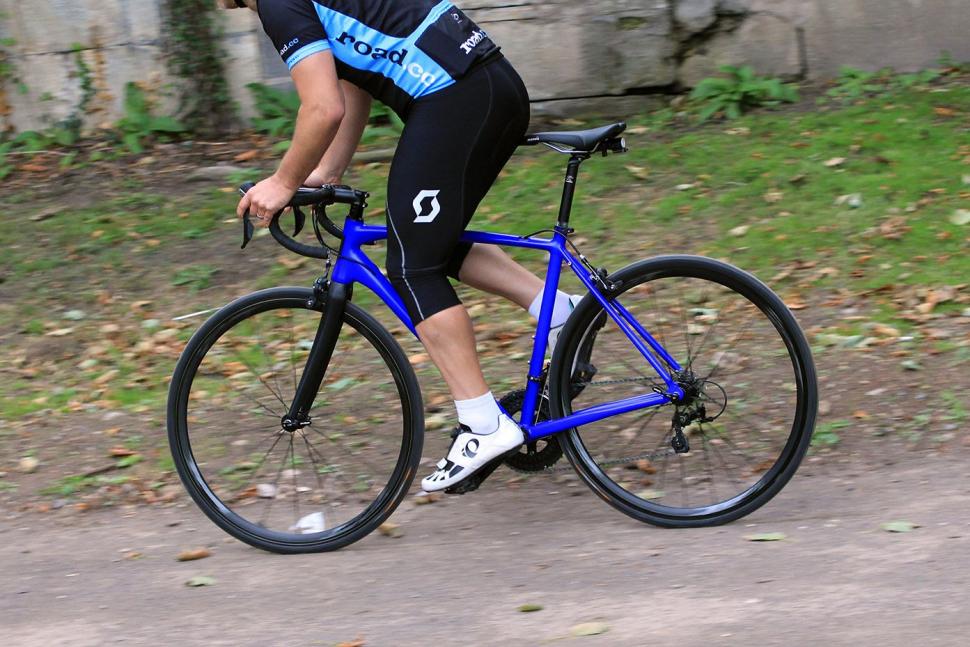

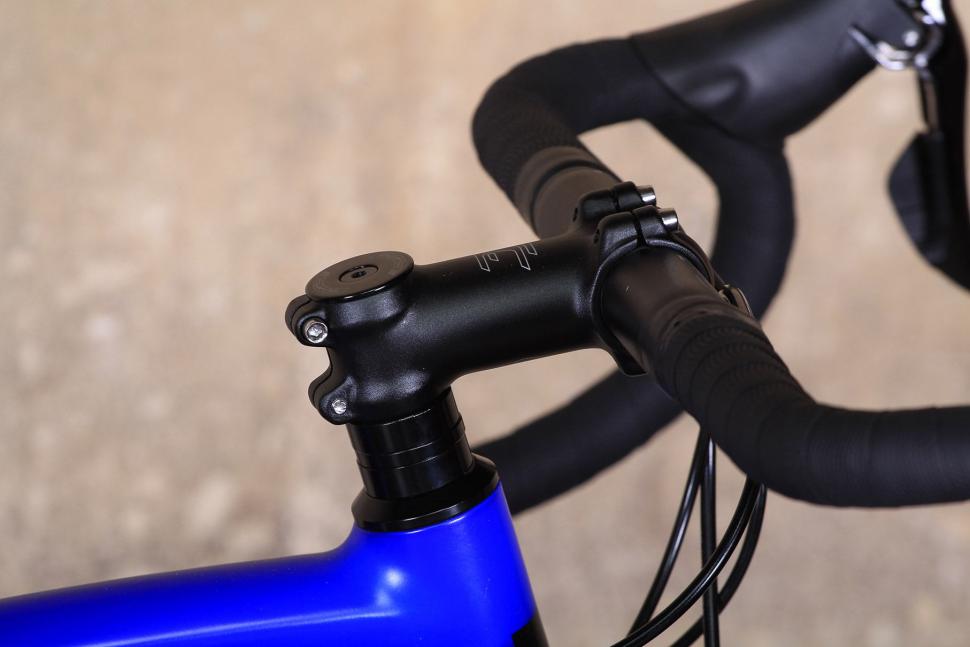

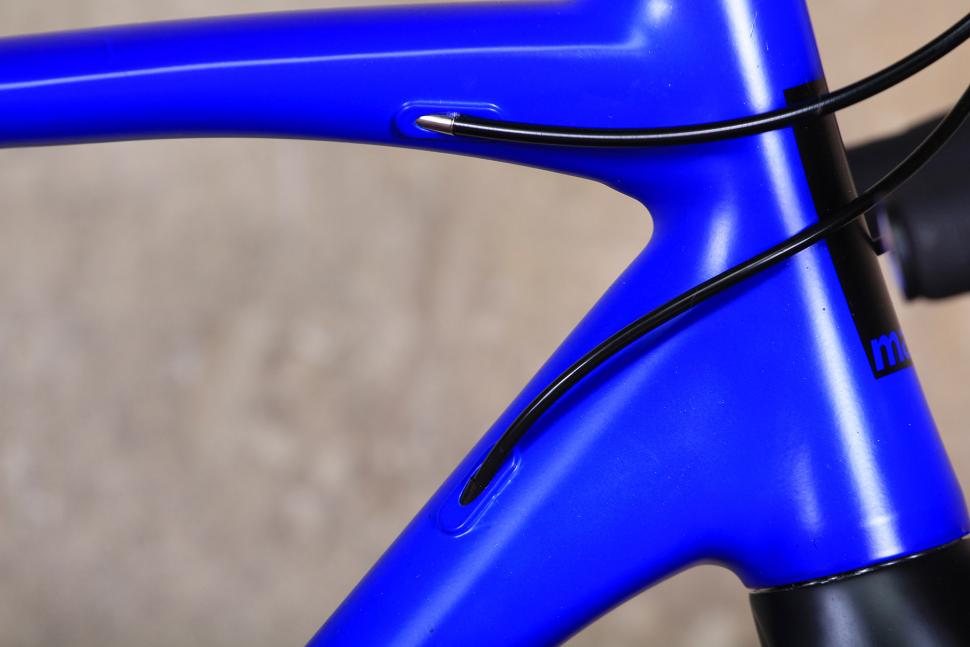

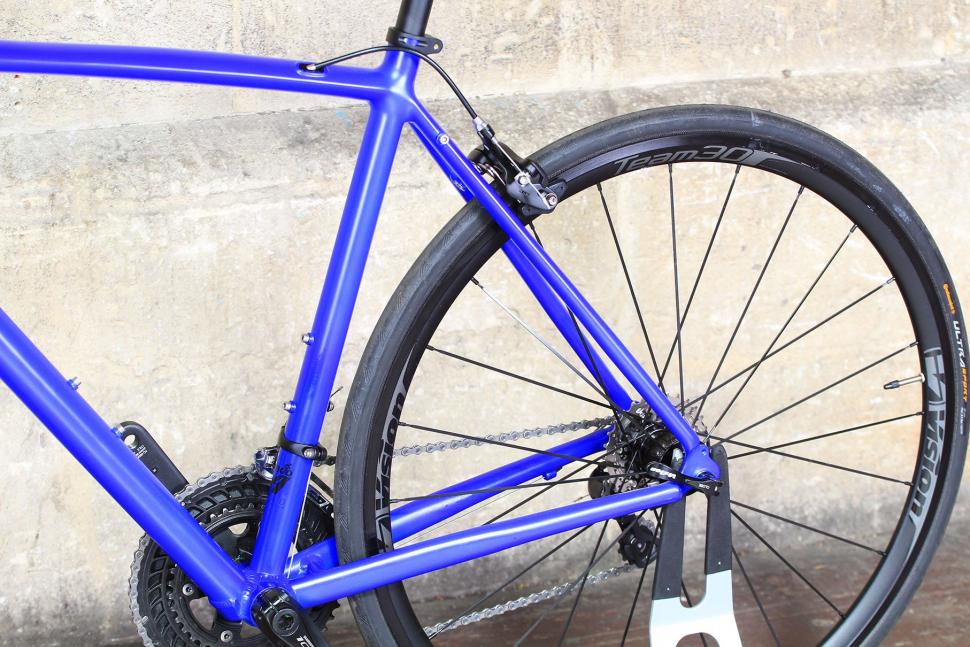
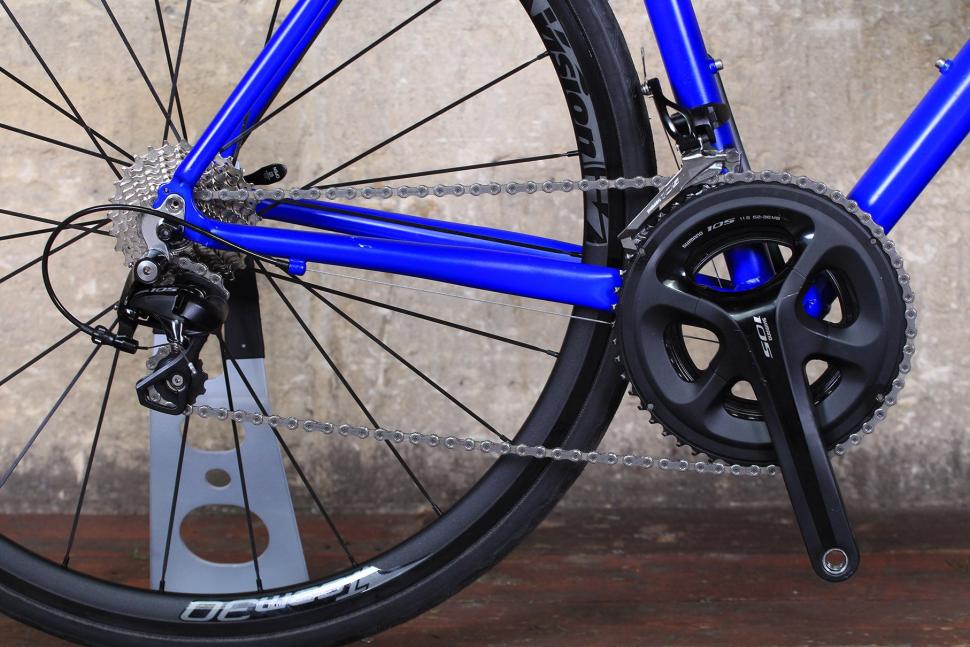
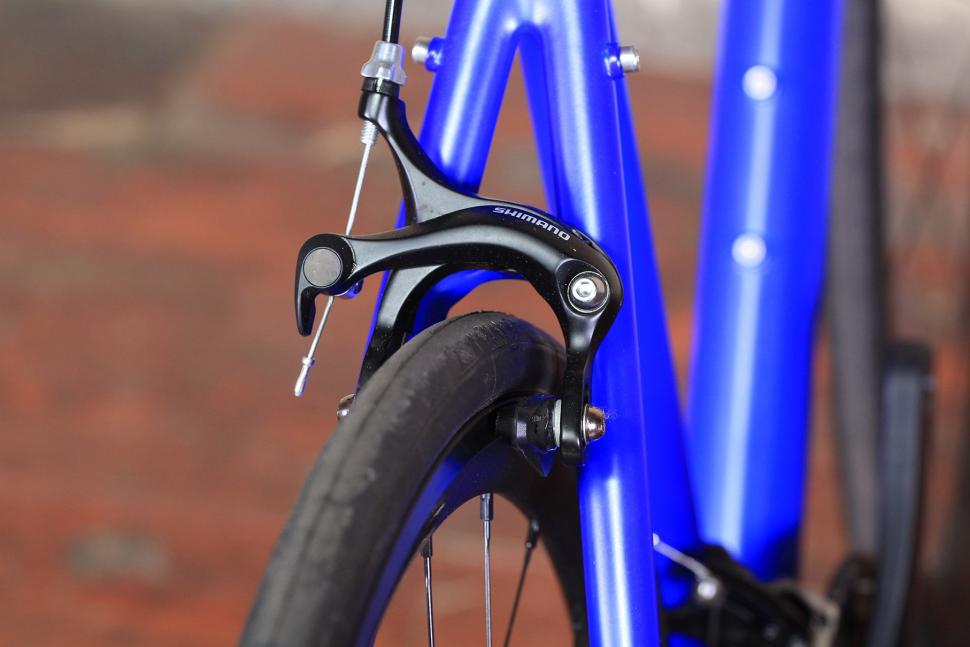





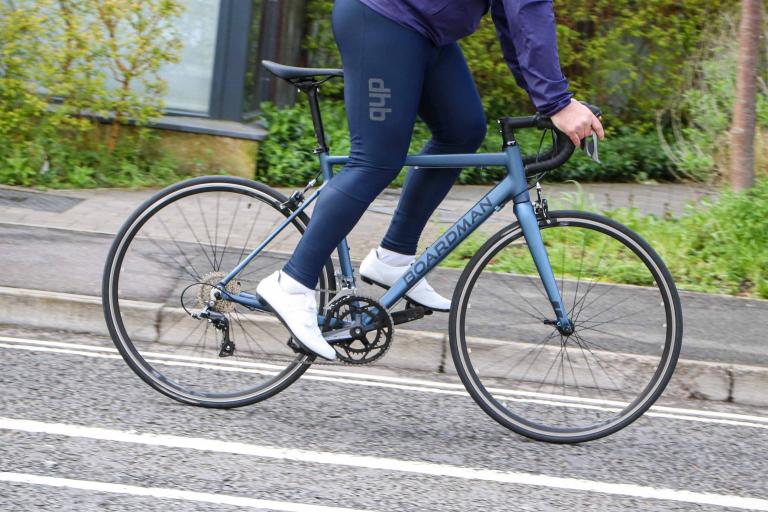
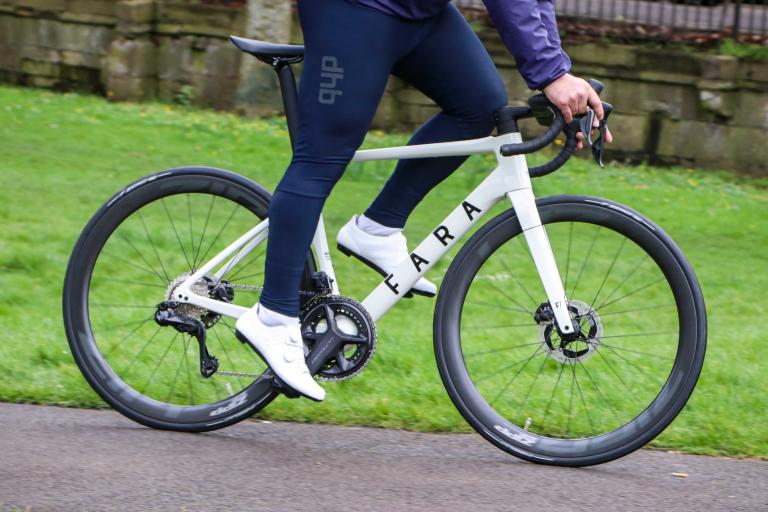
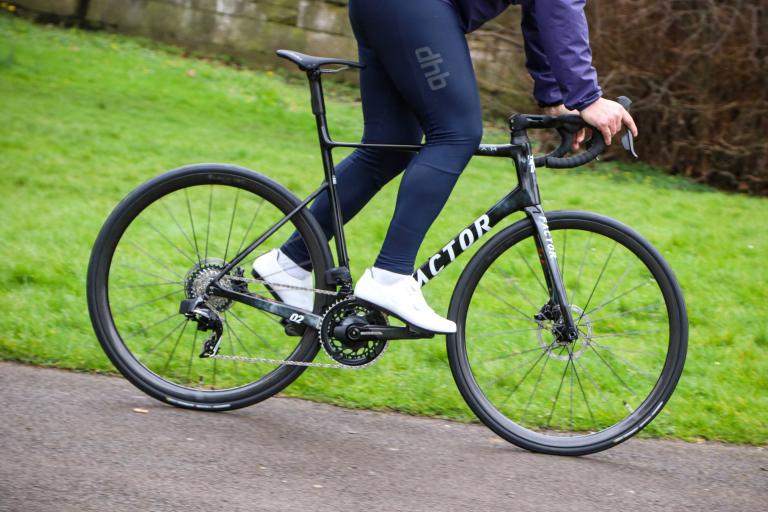
Add new comment
5 comments
It's interesting how things have improved over the last 25 years or so. A nice, raceable, roadbike then (531 frame and 105) would probably weigh around 24lb...
In terms of encouraging people to ride though, there's something fundamental in how a bike looks - shouldn't be, but there is - so it's always nice to see bikes at the lower price points that look like decent bits of kit.
The Tiagra-class R451 calipers were most likely used to ensure clearance for fenders/mudguards. Are the R650 units a definite step up? It's been a while since Shimano updated either set of long-drop brake calipers.
Definitely a solid choice for the price IMHO and nicely considered by the folks at Mango. While simple and without flourish, the frame paint's not too shabby either!
An informative and thorough review of a nice bike but I do wonder if you really can tell it's got a tapered steerer by its sharper steering. Could a bottom bearing that's a whole eighth of an inch wider than the top bearing make that much difference? I've got a thirty year-old frame with miserly one-inch bearings that tracks and steers faultlessly and it's not by magic.
I'd love to see blind tests on some of these 'essential' features that we all lust after and I reckon some reviewers would make mugs of themselves. I know I would.
Might be wrong and I know it won't make a massive difference but doesn't the stiffness come from the wider welds used due to the increased size of the headtube? Also, it "should" create a stiffer brace using a larger sized tube
A good, thorough review.
But please, please stop using "alloy" to refer only to aluminium alloy. And you with an engineering degree!